General Info – summary
This Tree–like plant is evergreen, non-woody, lacks branches and bark. The trunk may reach 12m high and has densely packed, imbricated petioles bases. Large, simple light green Leaves have a bright red or orange midrib. Lateral veins run parallel up to the margin. Usually, unisexual Flowers occur in spikes. This monocarpic plant has Fruit with a banana-like berry containing large, hard, round black seeds.
Description
Ensete ventricosum.
Previous Names: Ensete davyae, Ensete edule, Musa arnoldiana, Musa Davyae, Musa schweinfurthii, Musa ventricosa.
SA Tree No. 31.
Common names: (Afr) Piesangboom, Piesangpalm, Wildepiesang. (Eng) Banana Palm, Banana Tree, Ethiopian banana, False banana, Wild Banana. (Northern Sotho) Motholo, Motolô. (Tshivenda) Mulolo.
Family Musaceae: (banana family). This family has 3 genera (Musa, Ensete and Musella) and there are 50+ species. This includes the common commercial banana. These plants have an unbranched Pseudostem (made from rolled bases of leaves) that may reach 15m high and members may appear to have woody stems. Spirally arranged leaves are simple (have a single blade). The Midrib is thick, and many parallel veins extend from the midrib to the leaf margin. Flowers develop in bract axils. They are usually unisexual, irregular and surrounded by the large bracts. Each flower is rich in nectar and has 5-6 Stamens, bearing anthers with 2 pollen sacs. The inferior Ovary has 3 locules, each with several ovules. There is a short style and a 3-5 lobed stigma. Seeds have a thick hard black Testa (seed coat).
Name derivation: Ensete – the local name in Abyssinia (Ethiopia). ventricosum – with a swelling – the plant has a swelling at the base. Ensete ventricosum is only species of the genus Ensete in southern Africa. The type specimen was collected in Angola.
Conservation: National Status: L C. (Least concern). Assessment Date: 2004 (D. Pillay). The population is stable.
Tree
The fleshy, thickset Tree-like plant is a perennial herb 6 to 12m high. It has no secondary thickening (it is non-woody), no bark and is unbranched. The Stem (main axis of the plant, the leaf and flower bearing as distinguished from the root-bearing axis) may narrow slightly towards its apex (photo 598). This stem consists of densely packed imbricated (having regularly arranged, overlapping edges) bases of Petioles (leaf stalks), which remain when the blades of the leaf have died and fallen. The stem has no annual rings but a cross-section, part the way up the stem, reveals petiole (leaf stalk) bases that appear almost as spirals and are slightly similar in appearance to annual rings (photo 572 under Leaves).
- 116. 2013/03/25 Kirstenbosch NBG. Photo: David Becking.
- 598. 2014/03/06 Walter Sisulu NBG. Photo: David Becking.
- 929. 2014/11/25 Walter Sisulu NBG. Photo: David Becking.
Leaves
This is an evergreen monocotyledonous (flowering plant which has only a single seed-leaf or cotyledon) plant. The smooth, light green Leaves are similar to those of a banana but bigger – reaching up to 5m in length and nearly 1m in width. The large, spirally arranged leaves are simple (has a single blade which may have incisions that are not deep enough to divide the blade into leaflets). The short Petiole (stalk that attaches the leaf blade to the stem) expands and together with the leaf bases becomes sheath-like and forms part of the stem. The young leaves are crowded at the top of the otherwise bare trunk. The leaves are oblong to oval, light green and entire (with a continuous margin, not in any way indented). The striking thick orange-red Midrib is easily recognisable (photo 679) and is prominent on both sides. Lateral Veins are numerous and run parallel towards the margin (photo 854). The plant has no annual rings but a cross-section part the way up the stem reveals the petiole and leaf bases that appear almost as spirals and are slightly similar to annual rings (photo 572).
- 679. 2014/12/23 Walter Sisulu NBG. Photo: David Becking.
- 854. 2014/03/25 Walter Sisulu NBG. Photo: David Becking.
- 572. 2017/01/24 Walter Sisulu NBG. Photo: David Becking.
Flowers
After about 5 to 8 years, this Monocarpic plant flowers once, sets seeds and then dies after fruiting (photo 929 under Tree). This is similar to the raffia palm – Raphia australis. Each Flower forms on a massive pendulous Spike (simple indeterminate inflorescence with sessile flowers on a single unbranched stalk) which is up to 3m long and grows out of the centre of the plant. From here, it turns and points downwards (photo 78 & 602 under Fruit). There are 6 Perianth (the 2 floral envelopes considered together; a collective term for the calyx and corolla) segments that are arranged in 2 whorls of 3 each. Here the outer 3 and 2 of the inner 3 are reduced to lobes of a tube that is split along 1 side. The third inner whorl is free. A large shield of dark red, spathe-like Bracts (photo 78) protects the irregular flowers. In the inside of some of these Bracts, rows of small, whitish unisexual Male flowers (photo 855) with 5-6 Stamens develop. The sixth bract may be rudimentary. The Filaments are filiform (thread-like – photo 855) and the purple Anthers are linear and have 2 Thecae (pollen sacs). The Female or occasionally bisexual flowers develop between the bracts and are not easily visible. There is a single Pistil (a unit of the Gynoecium, the female element of the flower, composed of the Ovary, Style and Stigma). The inferior Ovary has 3-Locules (photo 682 –under Fruit) and each locule has many Ovules. There is a short Style, and the Stigma has 3-5 lobes. As the flower matures, the whole flower head hangs down enabling it to be visible from below (photo 78). (Oct-Nov).
- 78. 2014/04/29 Walter Sisulu NBG. Photo: David Becking.
- 855. 2014/03/25 Walter Sisulu NBG. Photo: David Becking.
Fruit
The indehiscent, elongated (up to 12cm long) Fruit is a large leathery Berry (pulpy, indehiscent fruit like a grape or tomato – photo 680). This berry is like a small banana – roughly 15 x 5cm and has a protruding Style (photo 571). The fruit is much less fleshy than a banana. Unlike the ordinary banana, this flesh is dry and tasteless. When ripe the green fruit turns orange or yellow. The cross-section (photo 682) of a single fruit shows the 3 chambers. In each, the Seeds are visible. They are black, large, roundish, and have a Testa (seed coat) that is very hard and smooth. A Hilum (a scar on the seed coat left by the stalk, which attaches the ovule to the ovary) is visible. After fruiting, the dead tree dries up – photo 929 under Tree. (Dec-Mar).
- 602. 2014/03/06 Walter Sisulu NBG. Photo: David Becking.
- 680. 2014/12/23 Walter Sisulu NBG. Photo: David Becking.
- 571 2017.01.24 Walter Sisulu NBG. Photo: David Becking.
- 682 2014.12.23 Walter Sisulu NBG. Photo: David Becking.
Distribution & Ecology
This somewhat drought tolerant plant is common in moist mountain forests, near swamps, riverbanks and in the open from 1 400m to more than 2 000m. However, it is frost sensitive. In South Africa it is occurs naturally in the north and eastern Lowveld e.g., in the Soutpansberg mountains (“Salt Pan Mountain” that run for about 100km, roughly east west in Northern Limpopo Province). This plant also occurs in Angola (where the type specimen was collected), Zimbabwe, Mozambique, Kenya and northwards to Ethiopia and the Congo. Monkeys and birds may disperse the seeds.
Ethnobotany
The stem can store large quantities of water, and this helps survival during dry and drought conditions. Underground rhizomes (underground stem – distinguished from the root by the presence of nodes, buds or scale-like leaves) are more palatable and nutritious than the fruit. This plant forms a staple food crop in Ethiopia – including the harvesting of horizontally running rhizomes and young fruits. A single root yields about 40kg of food but takes time to develop and seed planting needs to be staggered. The young Inflorescence is edible. Good Fibre, extracted from the stem is used for cordage and sacking. Propagation is mainly from seeds and some rarely produced suckers. The seeds may be dried, strung together and used for dancing rattles. In Kenya, they are made into rosaries. The whole plant, including roots, is useable as feed for livestock. Leaf-sheaths are usable as packing material and Beads can be made from Seeds. These seeds are easy to cultivate. This plant, with its large decorative leaves, provides a lush tropical effect in a garden (photo 116 under Tree).
References
Burrows, J.E., Burrows, S.M., Lotter, M.C. & Schmidt, E. 2018. Trees and Shrubs Mozambique. Publishing Print Matters (Pty) Ltd. Noordhoek, Cape Town.
Coates Palgrave, M. 2002. Keith Coates Palgrave Trees of Southern Africa, edn 3. Struik, Cape Town.
Lawrence, G. H. M, 1951. Taxonomy of Vascular Plants. The Macmillan Company, New York. Tenth Printing 1965.
Palmer, E. & Pitman, N. 1972. Trees of southern Africa. Balkema, Amsterdam, Cape Town.
Pillay, D. 2004. Ensete ventricosum (Welw.) Cheesman. National Assessment: Red List of South African Plants version 2020.1. Accessed on 2023/05/04.
van Wyk, B. & van Wyk, P. 1997 Field guide to Trees of Southern Africa. Struik, Cape Town.
http://www.plantzafrica.com/plantefg/enseteventrico.htm
www.plantzafrica.com/plantefg/enseteventrico.htm
http://www.kew.org/science-conservation/plants-fungi/ensete-ventricosum-ethiopian-banana
http://www.missouribotanicalgarden.org/PlantFinder/PlantFinderDetails.aspx?kempercode=c541
http://posa.sanbi.org/flora/browse.php?src=SP
Ensete ventricosum – Wikipedia

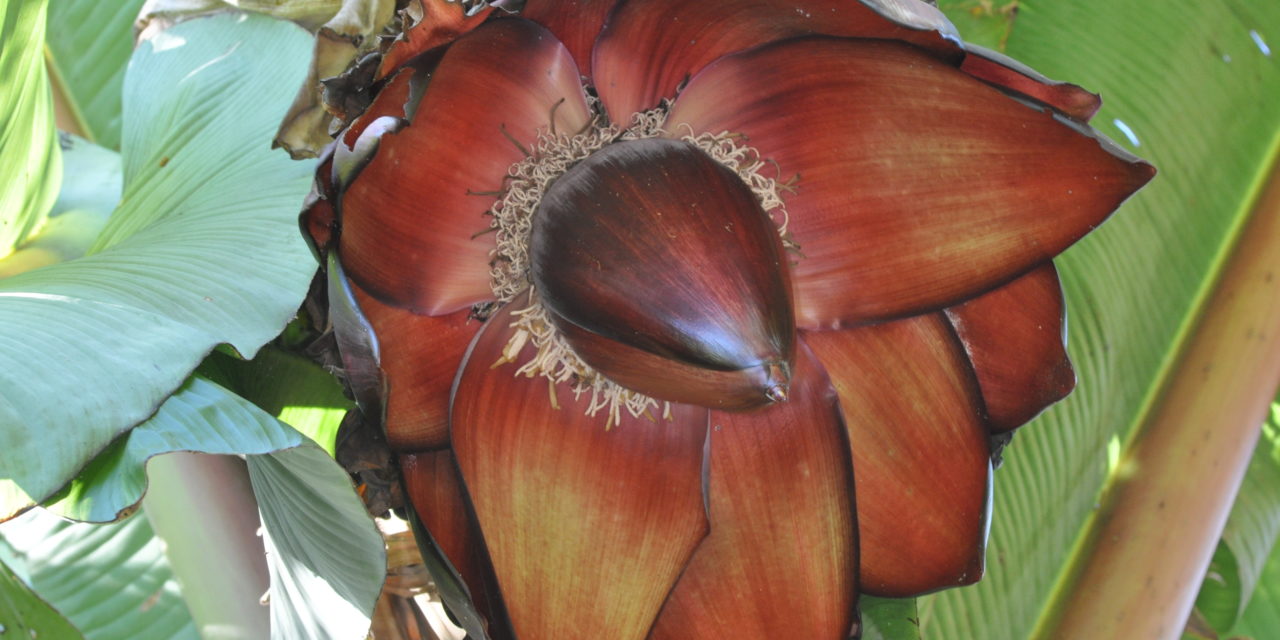
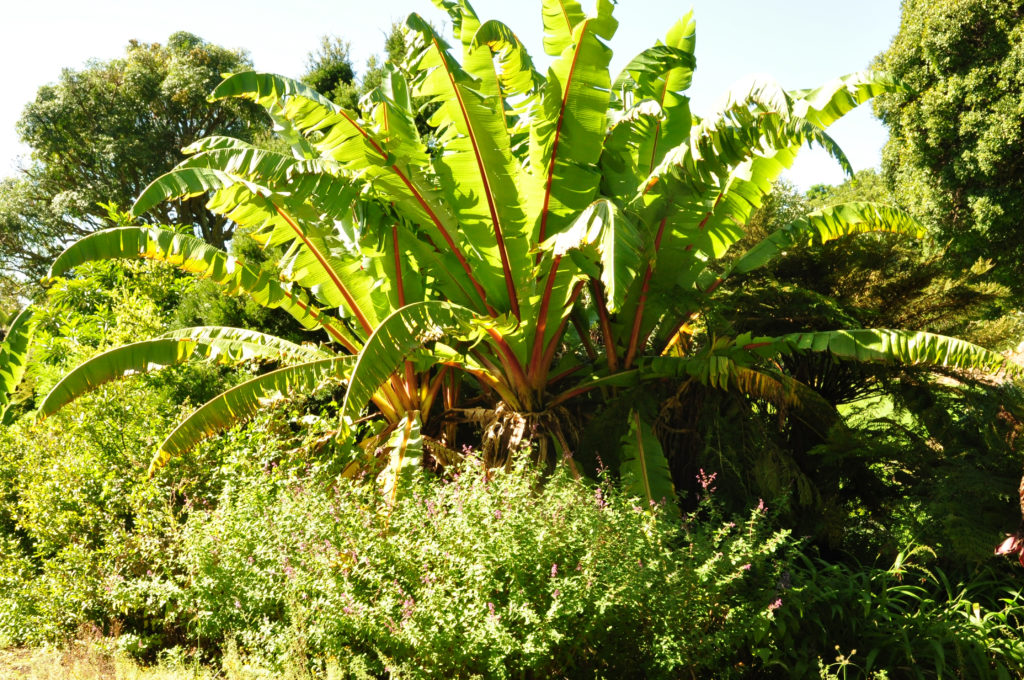
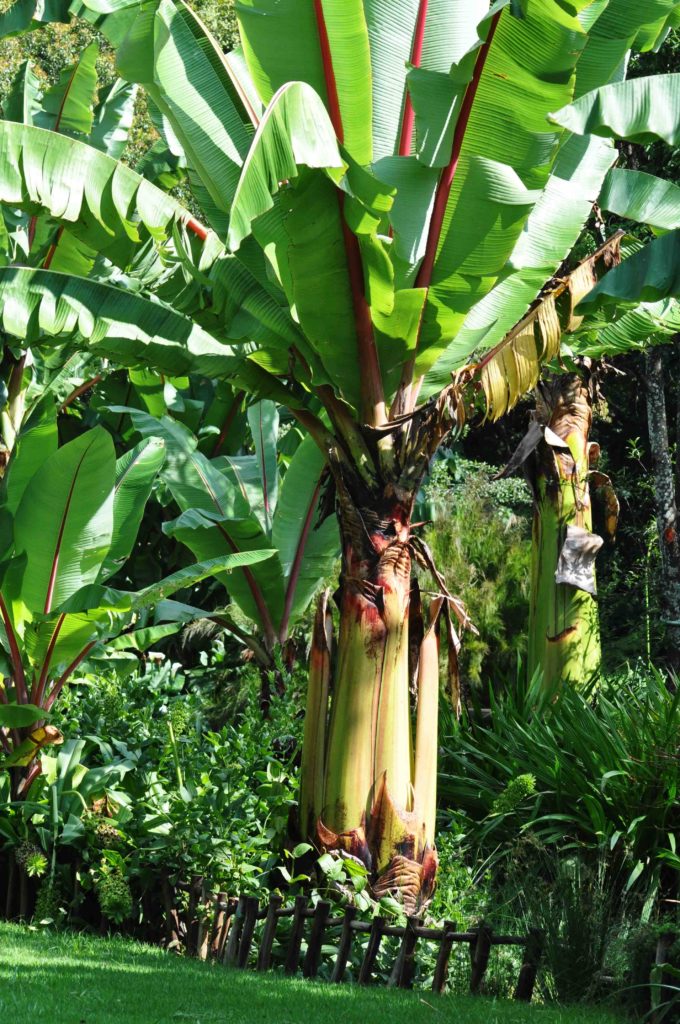
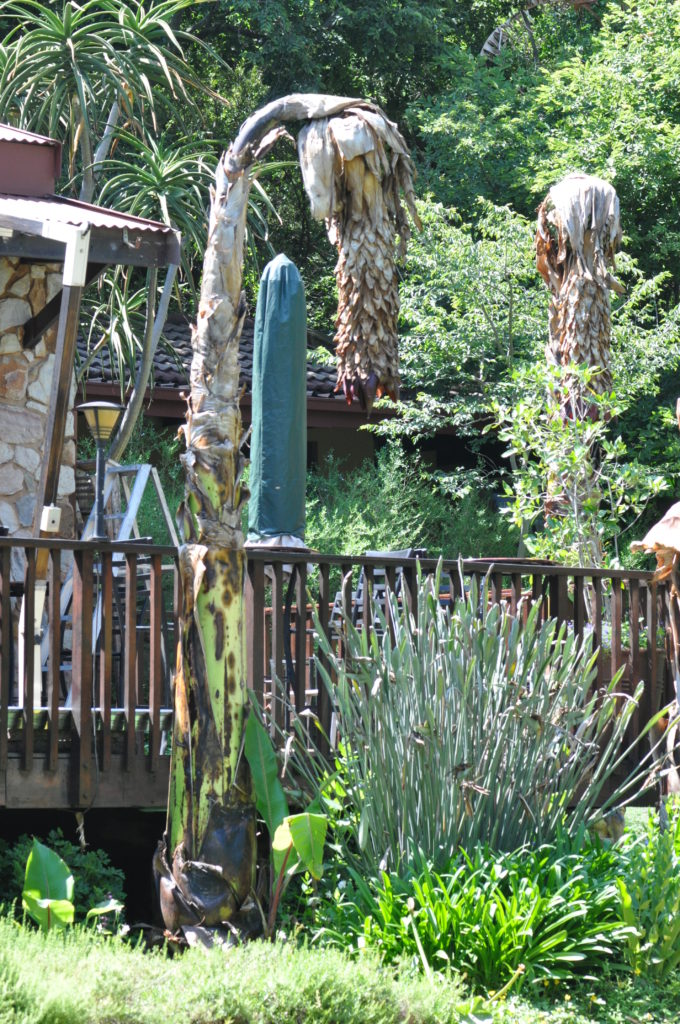
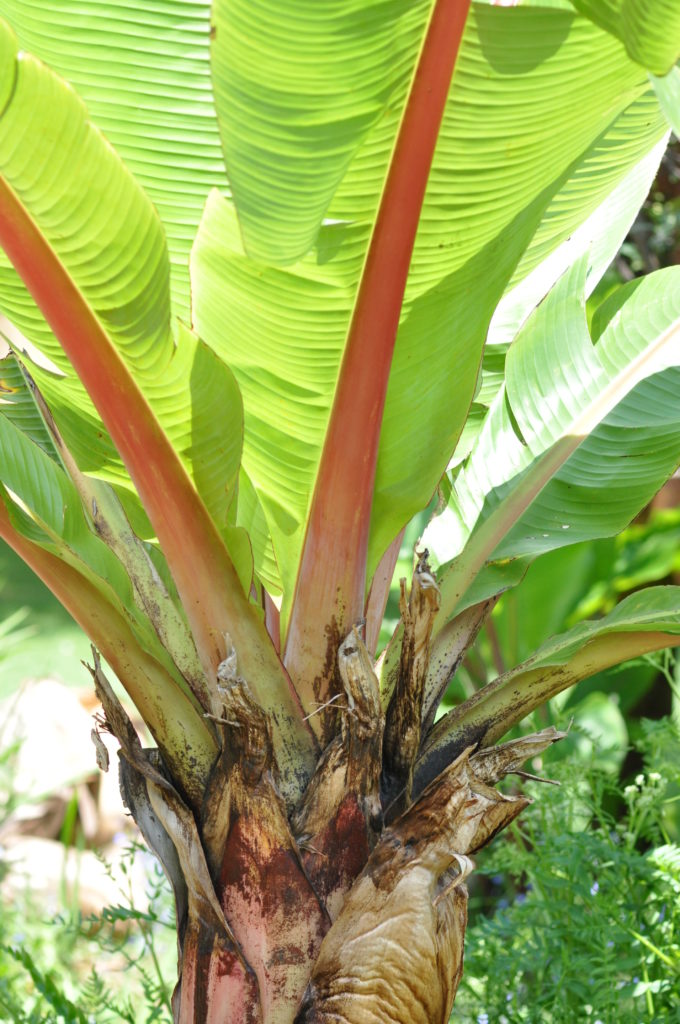
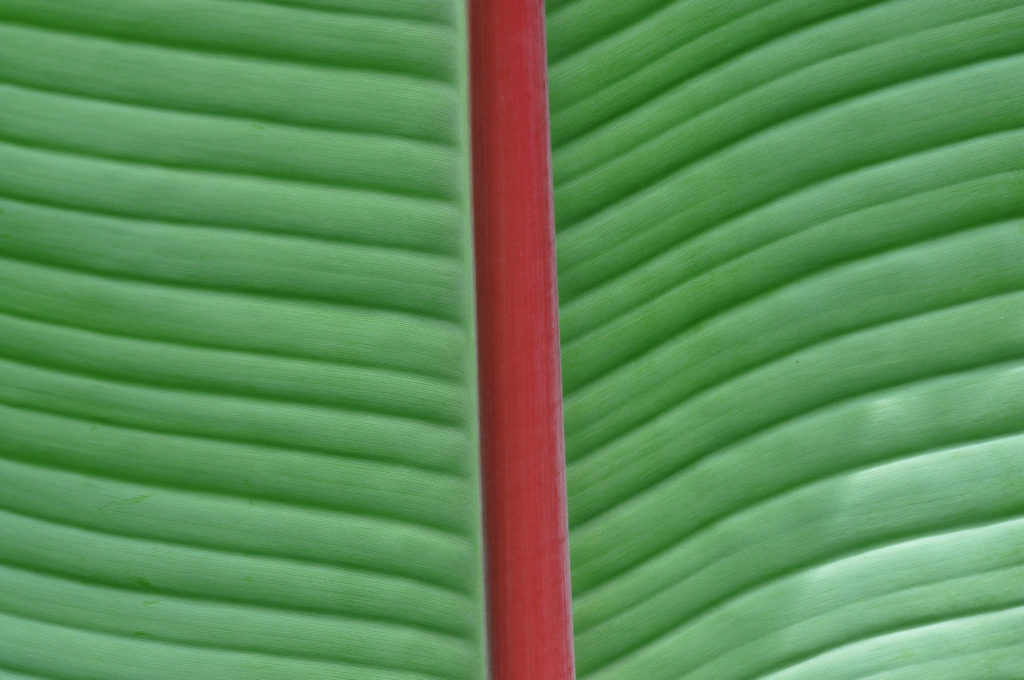
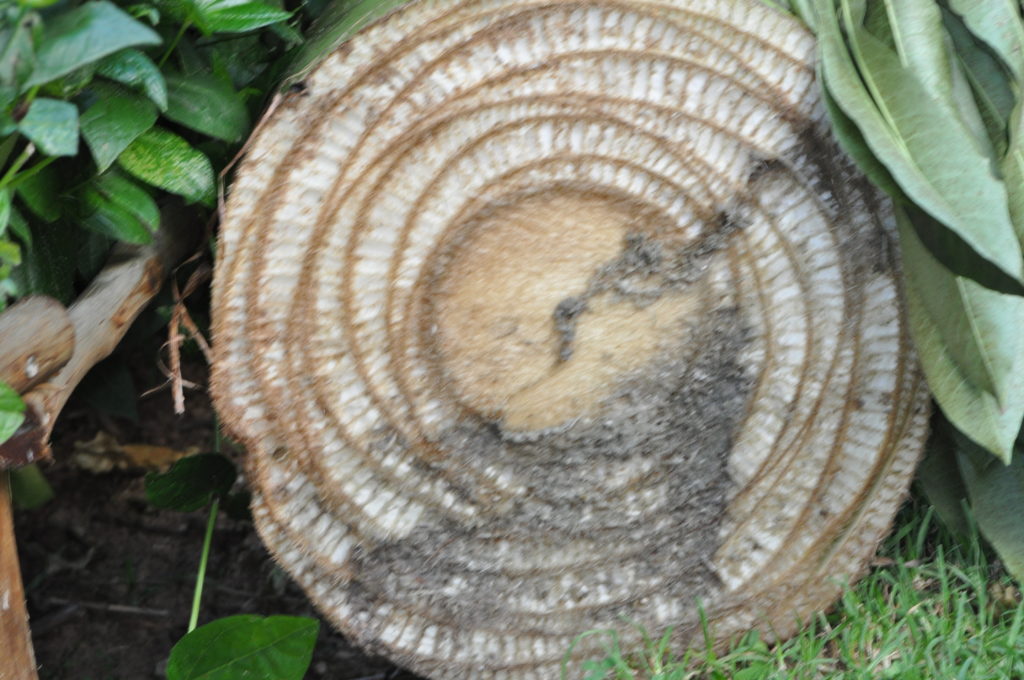
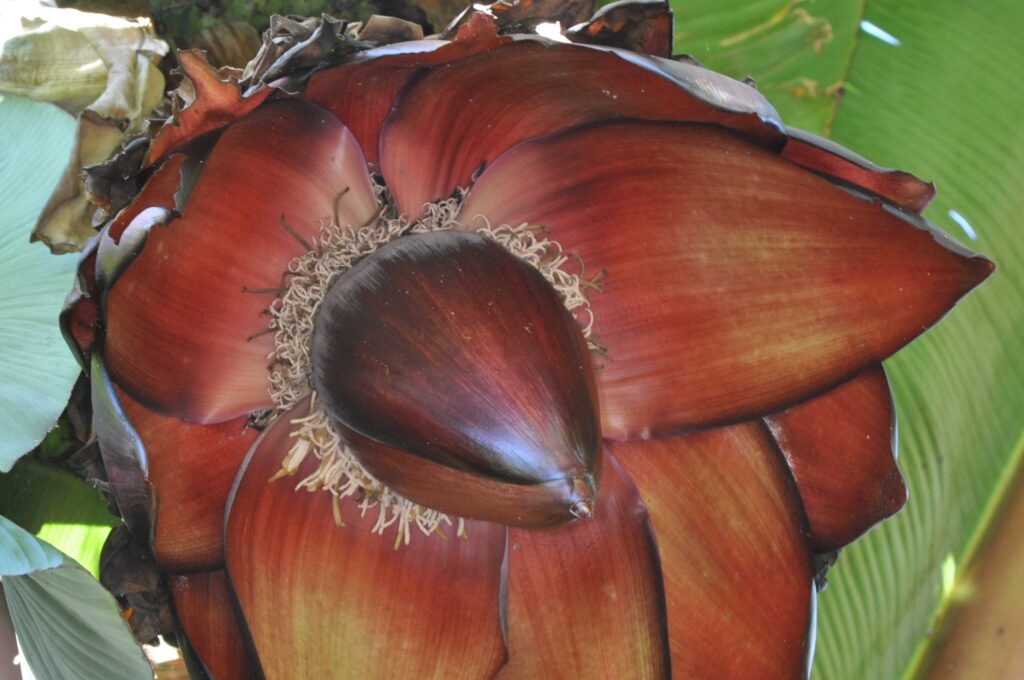
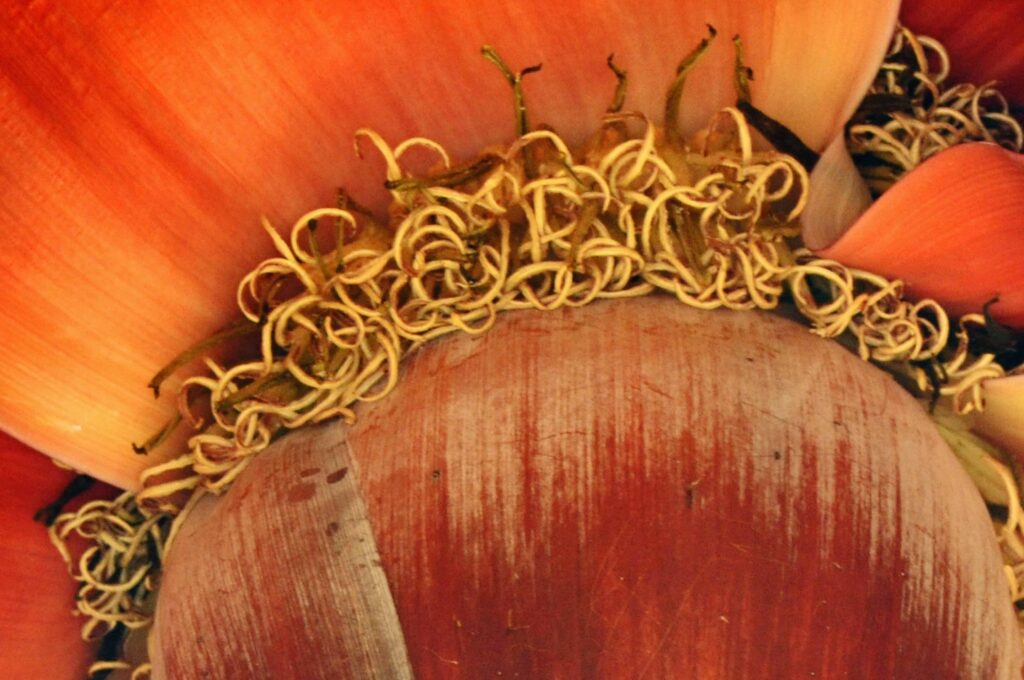
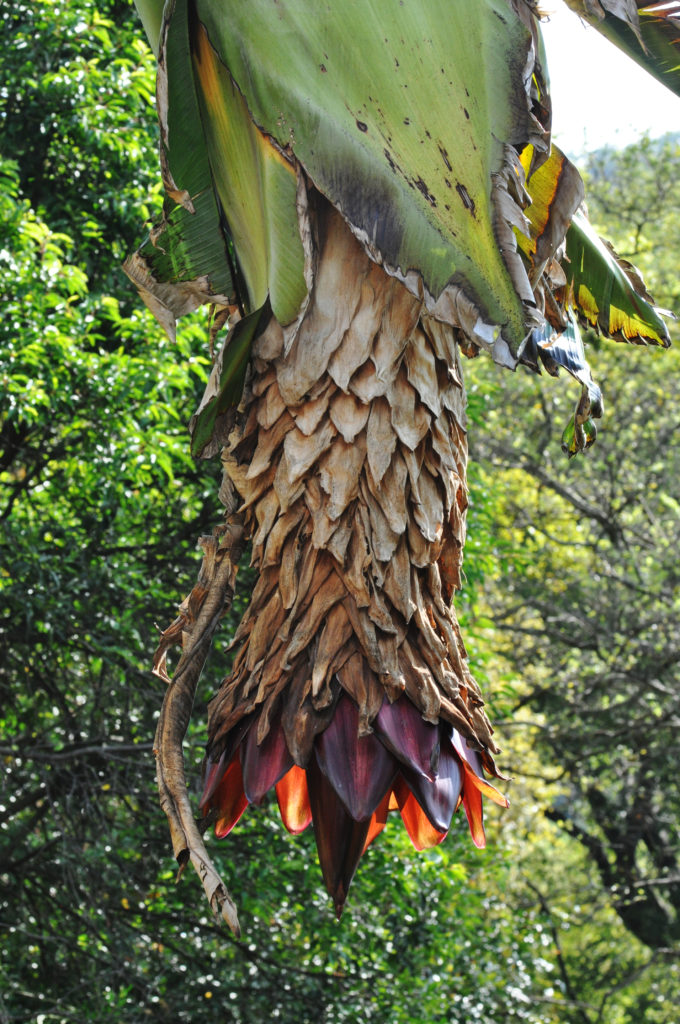
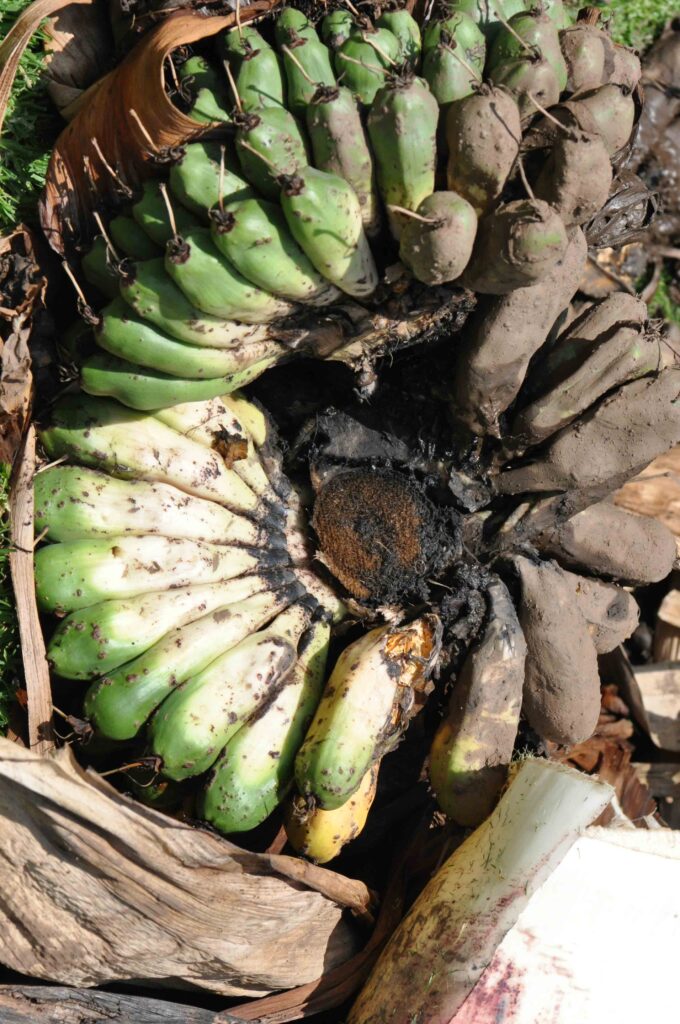
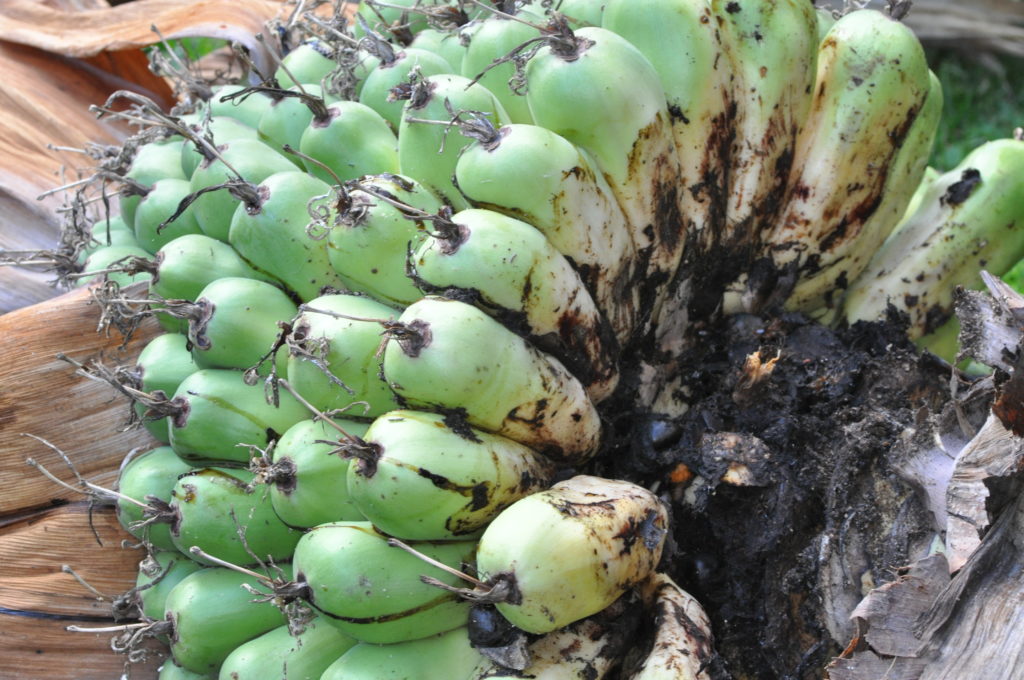
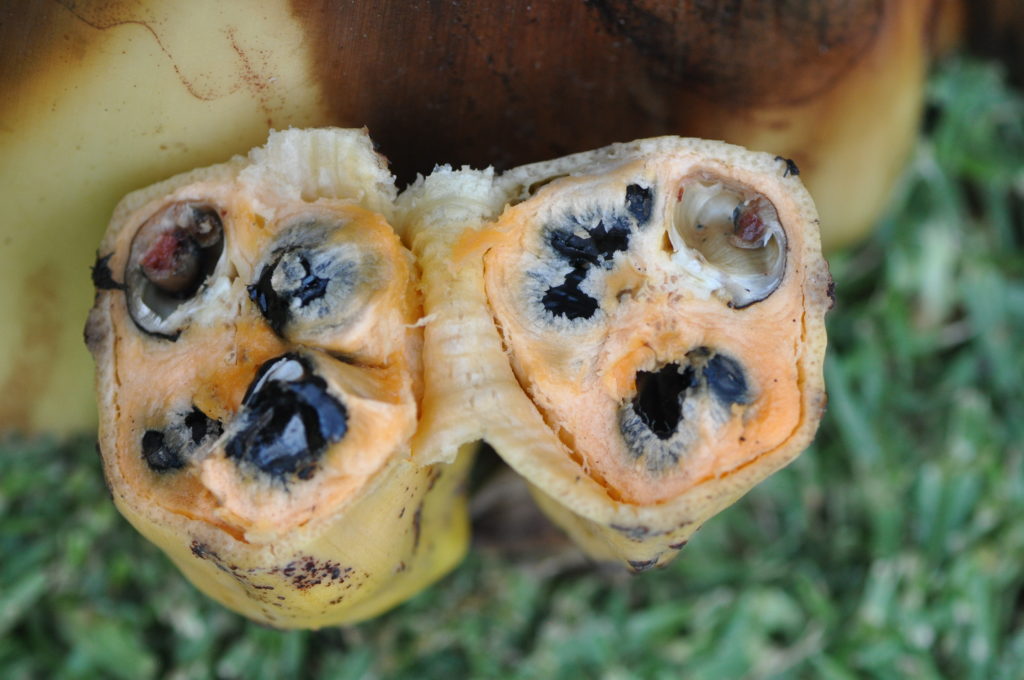
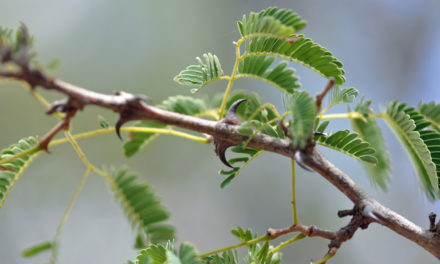
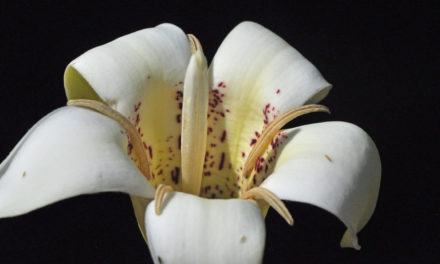
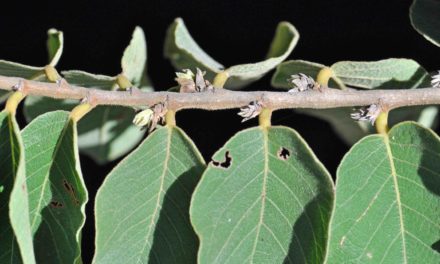
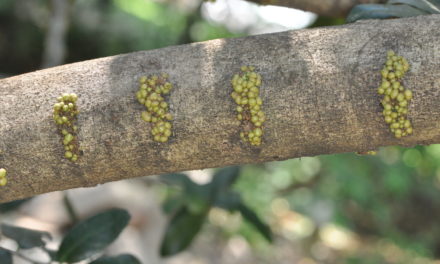
Good day
Where can we obtain seeds and large plants.